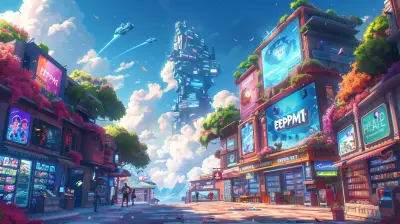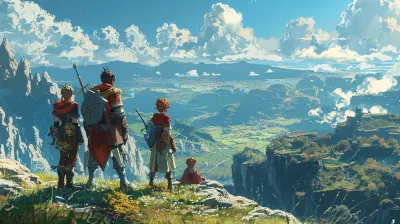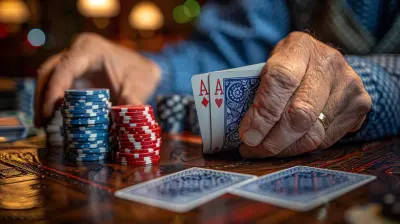From 8-bit to HD: The Visual Evolution of JRPGs
10 July 2025
If you've ever fallen in love with a JRPG (Japanese Role-Playing Game), you know it's more than just leveling up and saving the world. It’s about stepping into a visual world that grows and transforms with you. From the humble pixelated sprites of the '80s to the jaw-dropping cinematic experiences of today, JRPGs have undergone a legendary glow-up in the graphics department.
But let's be real—this transformation isn’t just about prettier graphics. It’s about storytelling, immersion, emotion, and that deep sense of awe when you first step into a new digital world. So, how did we get from pixelated warriors to hyper-realistic heroes? Buckle up, because we're taking a nostalgic road trip from 8-bit to HD.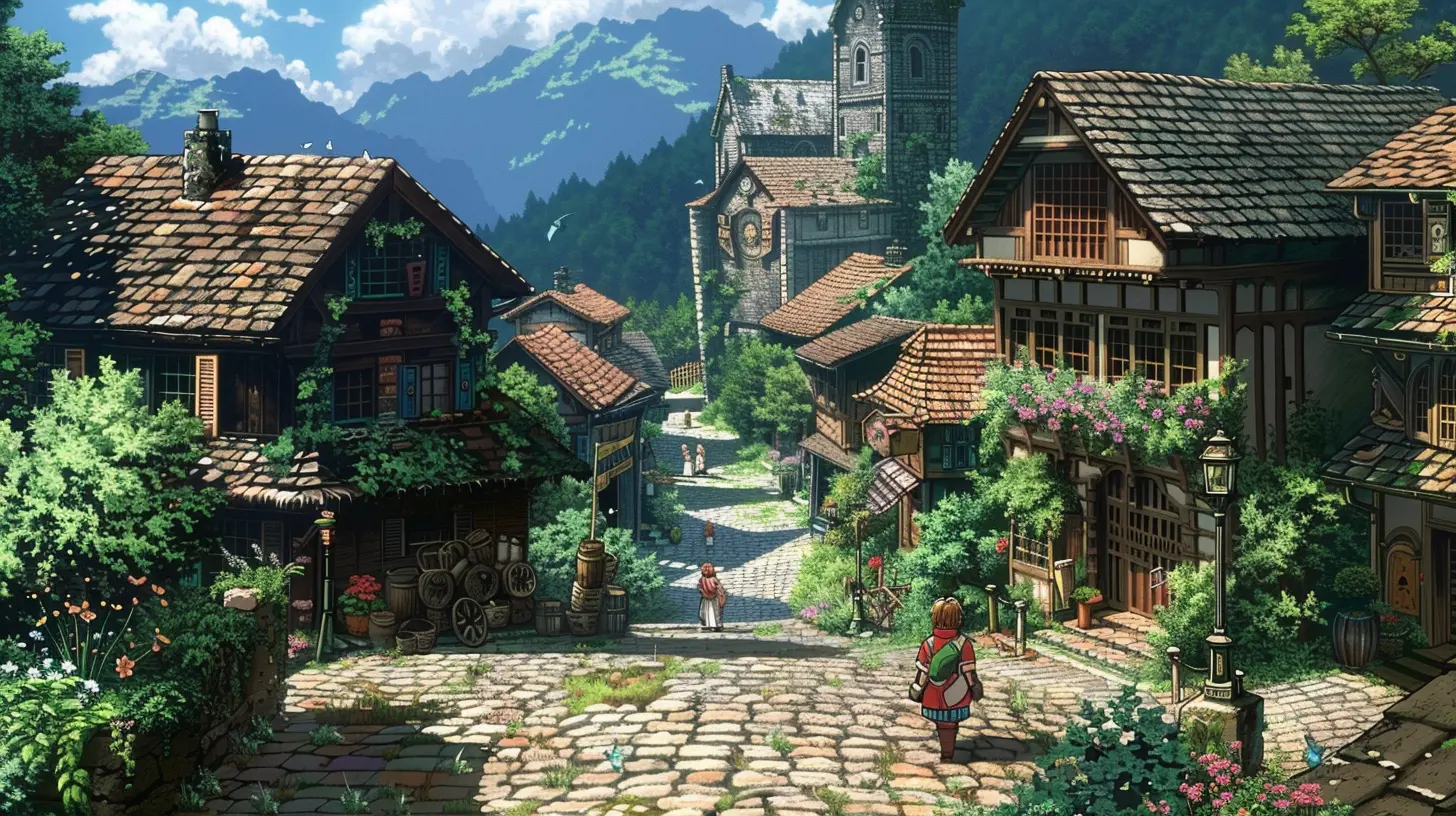
The 8-Bit Beginnings: Pixel Power and Imagination
Ah, the ‘80s. A time of cassette tapes, neon everything, and blocky pixels.JRPGs first found their footing in the 8-bit era with consoles like the Nintendo Entertainment System (NES). Trust me, the graphics were anything but impressive by modern standards—characters looked like Lego people, and environments were made of clunky squares. But those visuals? They had charm. They sparked imagination. You didn’t need full facial animations to feel emotion. Those little sprites somehow carried epic weight.
Think of games like Dragon Quest (originally Dragon Warrior in the West) and the early Final Fantasy titles. They laid the groundwork for what JRPGs would become—introducing classic fantasy tropes, turn-based combat, and, of course, memorable pixel art.
Key Highlights:
- Limited palettes, yet expressive pixel art.
- Imaginative storytelling carried by minimal visuals.
- Iconic character designs that stuck despite low resolution.
Isn't it wild how a few pixels and a 16-color scheme could make you feel like you were on a life-or-death quest?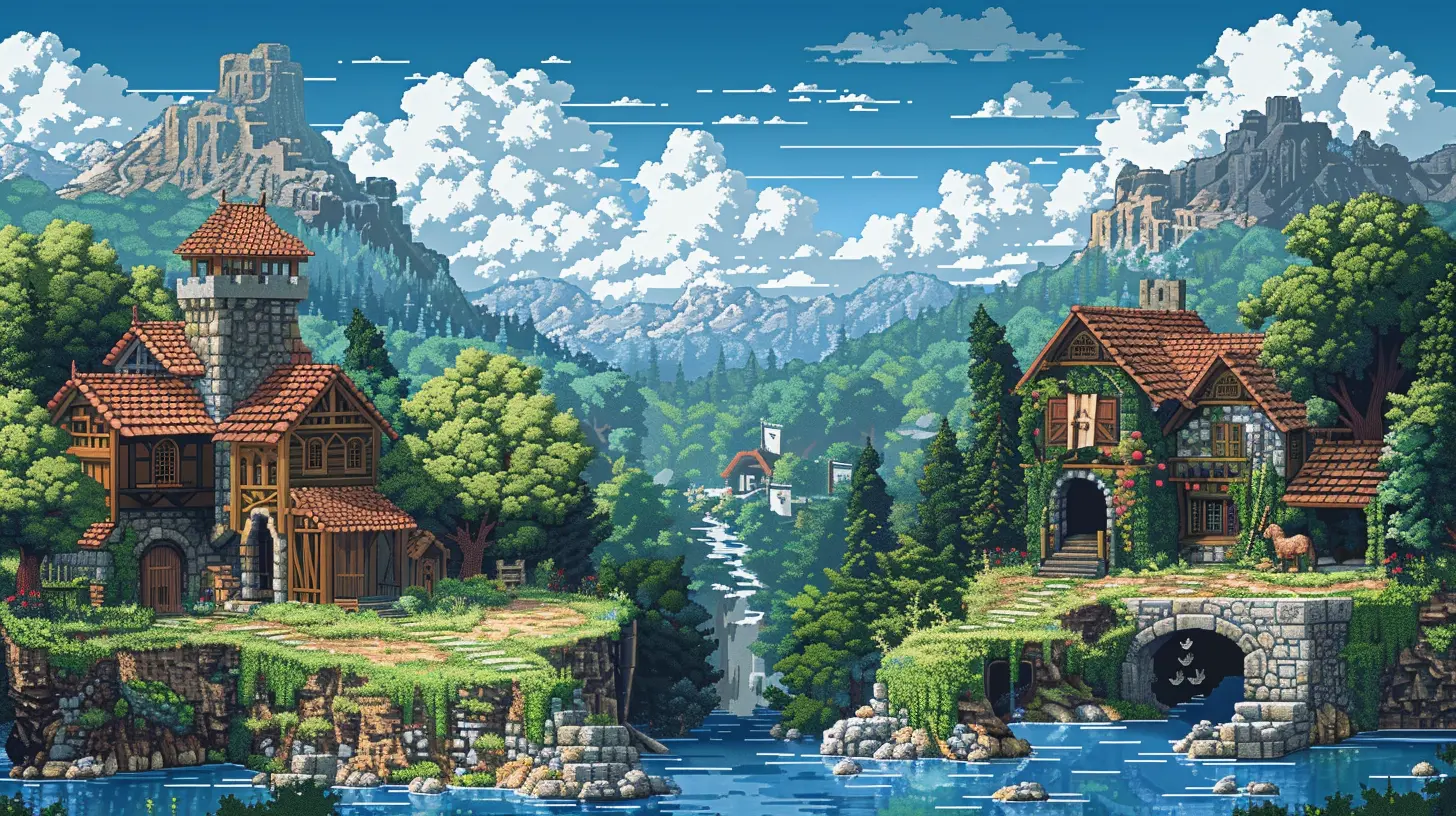
16-Bit Magic: More Detail, Richer Worlds
Enter the SNES and Sega Genesis era—aka the golden age of JRPGs.The leap to 16-bit didn’t just double the bits; it multiplied the possibilities. Games could now render more detailed characters and environments. Suddenly, forests felt lush, towns looked lively, and battles had that extra flair. Developers weren’t just telling stories; they were building worlds.
Games like Chrono Trigger, Secret of Mana, and Final Fantasy VI brought painted backgrounds, animated sprites, and dynamic lighting into the mix. These weren’t just video games anymore—they were playable art.
And let’s not forget the birth of the anime aesthetic in JRPGs. With better hardware, developers now had the power to craft characters that looked straight out of a Studio Ghibli film.
Why This Era Rocks:
- Improved animations and battle effects.
- Backgrounds that felt hand-drawn.
- Emotion-driven scenes, despite lack of voice acting.
If the NES era was doodling with crayons, the SNES era was painting with watercolors.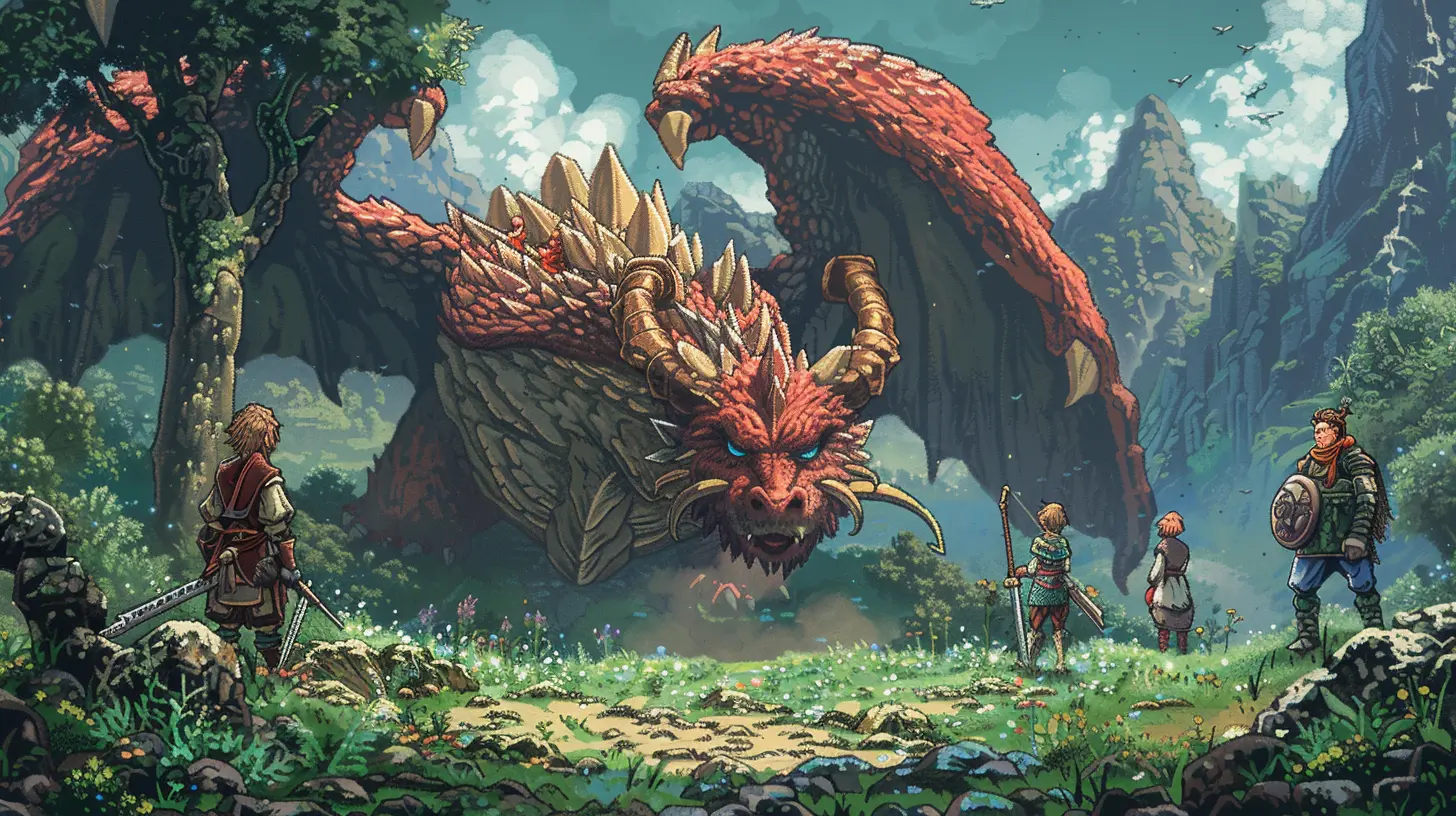
From Pixels to Polygons: The 3D Revolution
The ‘90s were a wild time. Baggy jeans, dial-up internet, and for JRPGs? A full-blown dimensional upgrade.With the arrival of the Sony PlayStation and Nintendo 64, everything went 3D—including JRPGs. Suddenly, characters weren’t just flat sprites; they had depth, movement, and emotions (even if their faces were just...kind of there).
This era saw landmark titles like Final Fantasy VII, which practically redefined the genre. Sure, the 3D models were a bit blocky (Cloud's arms were literal rectangles!), but no one cared. These games were cinematic. They had cutscenes. They had expressive characters, complex themes, and larger-than-life boss fights all rendered in glorious (okay, blurry) 3D.
Game-Changing Features:
- CGI cutscenes that blew our collective minds.
- 3D exploration, making the game world feel more alive.
- Camera work that added theatrical flair to boss fights.
This was the era when JRPGs stopped feeling like games and started feeling like interactive movies.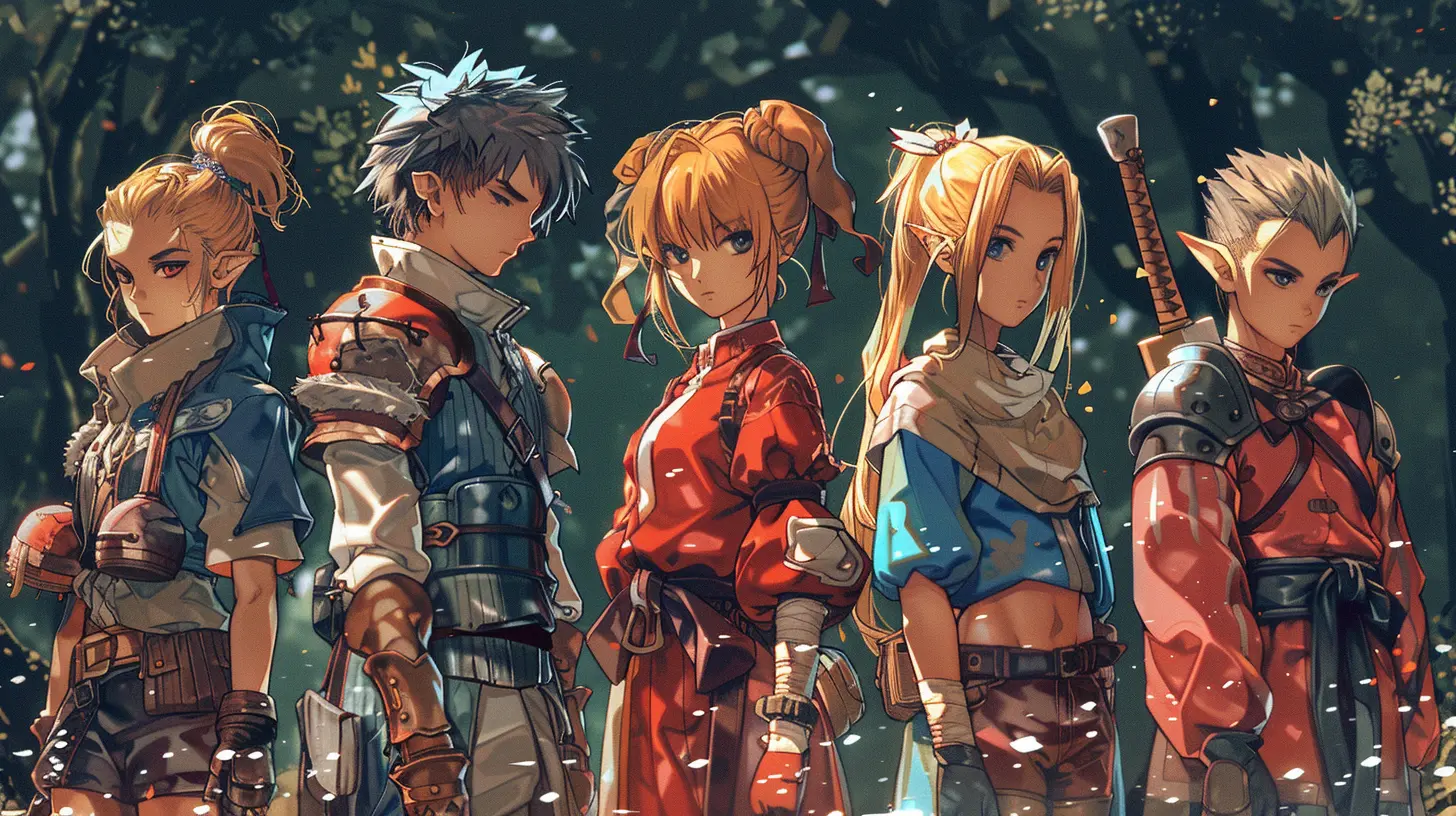
The Rise of HD: Welcome to the Modern Era
Fast forward to the 2000s and beyond, and it’s clear—JRPGs aren’t just games anymore; they're full-blown experiences.The PlayStation 3, Xbox 360, and modern PCs introduced high-definition rendering. Games like Final Fantasy XIII, Ni No Kuni, and Tales of Berseria started blending anime-style visuals with real-time battle mechanics and open-world designs.
And then came Persona 5—a visual masterclass. From its slick menus to its stylized character art, it felt like playing through an animated music video. Everything popped off the screen with purpose.
Today, games like Final Fantasy VII Remake are pushing visual storytelling to new limits. Realistic character models. Dynamic lighting. Environments lush with detail. And all rendered in stunning 4K. You can see the emotion in a character’s eyes. You can feel the weight of a sword swing.
Visual Highlights of Modern JRPGs:
- Hyper-realistic character models.
- Cinematic storytelling with real-time rendering.
- Fluid animations and detailed battle choreography.
We're officially in an era where JRPGs rival Hollywood productions. Except, you get to control the action.
The Emotional Impact of Visual Evolution
So, why does this evolution matter? Why should we care about pixels turning to polygons?Because visuals aren’t just eye candy—they’re emotional triggers. When a world feels real, you care more. When a character looks distressed, you feel it. When a battle is choreographed like a movie scene, your adrenaline spikes.
The evolution of JRPG visuals reflects our growing need for immersive storytelling. As we've aged, so have our expectations and experiences. We want narratives that resonate, and visuals that transport us.
The graphics enhance the feeling of heroism, nostalgia, and personal growth. They turn a simple story into an unforgettable journey.
Retro Aesthetics Make a Comeback
Ironically, even as graphics get more realistic, there's a growing love for retro styles.Games like Octopath Traveler and Sea of Stars blend old-school pixel art with modern lighting and effects. It's like wearing vintage jeans with new sneakers—classic, but fresh.
These games prove that you don’t need ultra-HD graphics to make an impact. Sometimes, it’s the art direction and heart that matter more.
Why Retro Still Works:
- Nostalgia factor for old-school gamers.
- Stylized art direction over realism.
- Faster development cycles, leading to more indie JRPG titles.
Turns out, 8-bit charm never truly dies.
The Future: What Comes After HD?
As tech continues to evolve, what's next for JRPG visuals?We're already seeing experiments with virtual reality, ray tracing, and AI-driven animation. Imagine stepping into a JRPG where you physically walk through towns, interact with characters using your voice, and feel the wind on your face via haptic gear.
Pretty wild, right?
And with fan-favorite series like Final Fantasy, Tales of, and Persona continuing to push the envelope, there’s no doubt that the future of JRPG visuals will be as breathtaking as ever.
Conclusion: A Journey Worth Every Pixel
From grainy pixel blocks to ultra-HD masterpieces, the visual evolution of JRPGs is a testament to the genre’s endurance and innovation. It’s like watching a friend grow up—from sketching doodles in the back of a notebook to painting full-blown murals.The heart of a JRPG has always been the journey—across lands, through hardships, and into the depths of characters’ souls. But as the visuals grew, so did our connection to those journeys. The better the visuals, the deeper the immersion, and the more unforgettable the experience.
So whether you're saving the world from a god-tier villain or just helping a villager find their lost cat, remember—you’re part of a legacy. One that started with 8-bit dreams and now exists in sprawling, HD glory.
Here’s to the pixels past, the polygons present, and the immersive futures ahead.
all images in this post were generated using AI tools
Category:
JrpgsAuthor:

Kaitlyn Pace
Discussion
rate this article
1 comments
Honor Reynolds
What a beautifully crafted journey through the evolution of JRPG visuals! It’s incredible to see how our beloved games have transformed over the years, blending nostalgia with innovation. Thank you for capturing the essence of this genre's rich history and emotional impact on so many players.
July 30, 2025 at 2:38 AM

Kaitlyn Pace
Thank you for your kind words! I'm glad you enjoyed the exploration of JRPG visuals and their evolution. It's a journey filled with nostalgia and creativity!
